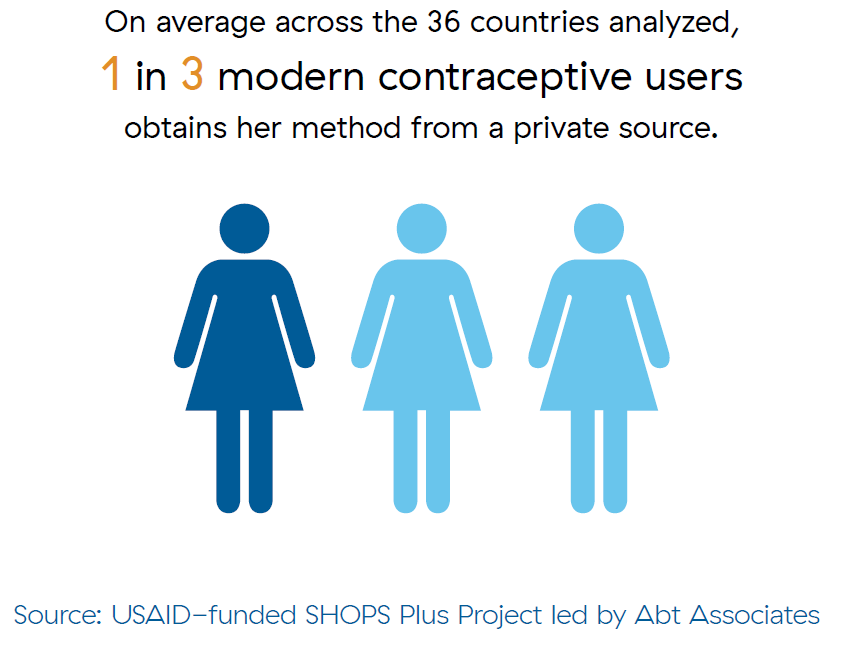Where women go for contraception and why it matters: findings from 36 countries
 A recent SHOPS Plus analysis of 36 low- and middle-income countries found that one in three modern contraceptive users obtained their method from a private source, more than half of pill and condom users get their method from the private sector, and one out of every four rural modern contraceptive users obtain their method from a private source. Understanding sources of contraception is key for government stakeholders, program implementers, and donors to improve contraceptive access, equity, and choice.
A recent SHOPS Plus analysis of 36 low- and middle-income countries found that one in three modern contraceptive users obtained their method from a private source, more than half of pill and condom users get their method from the private sector, and one out of every four rural modern contraceptive users obtain their method from a private source. Understanding sources of contraception is key for government stakeholders, program implementers, and donors to improve contraceptive access, equity, and choice.
“The COVID-19 pandemic is creating unprecedented challenges in each country’s contraceptive market related to supply chains, overwhelmed health systems, social distancing, and economic downturns,” says Sarah Bradley, SHOPS Plus global research director and author of the new brief. “Now, more than ever, it is critical for the public and private sectors to collaborate and create flexible solutions to respond to these new—and rapidly evolving—challenges.”
The authors shared contraceptive source findings and discussed what they mean for family planning program managers, donors, and policy makers in a webinar on May 7. A recording will be made available soon. The findings are showcased in a new brief. Download the brief.
SHOPS Plus analyzed Demographic and Health Survey data from all USAID Population and Reproductive Health and Family Planning 2020 focus countries with a survey since 2012 to examine contraceptive sources and how sources varied by method, geography, age, marital status, and socioeconomic status. The authors share potential implications related to contraceptive equity, sustainability, method choice, and policy.
This brief serves as a companion to a series of 21 country briefs published in late 2019 that show where women go for contraception. Two interactive data visualization tools, Private Sector Counts and Family Planning Market Analyzer, offer a more in-depth look at the data for family planning program managers and policy makers.
Bradley presented this study at a virtual session of the Population Association of America’s Annual Meeting on April 23, 2020.